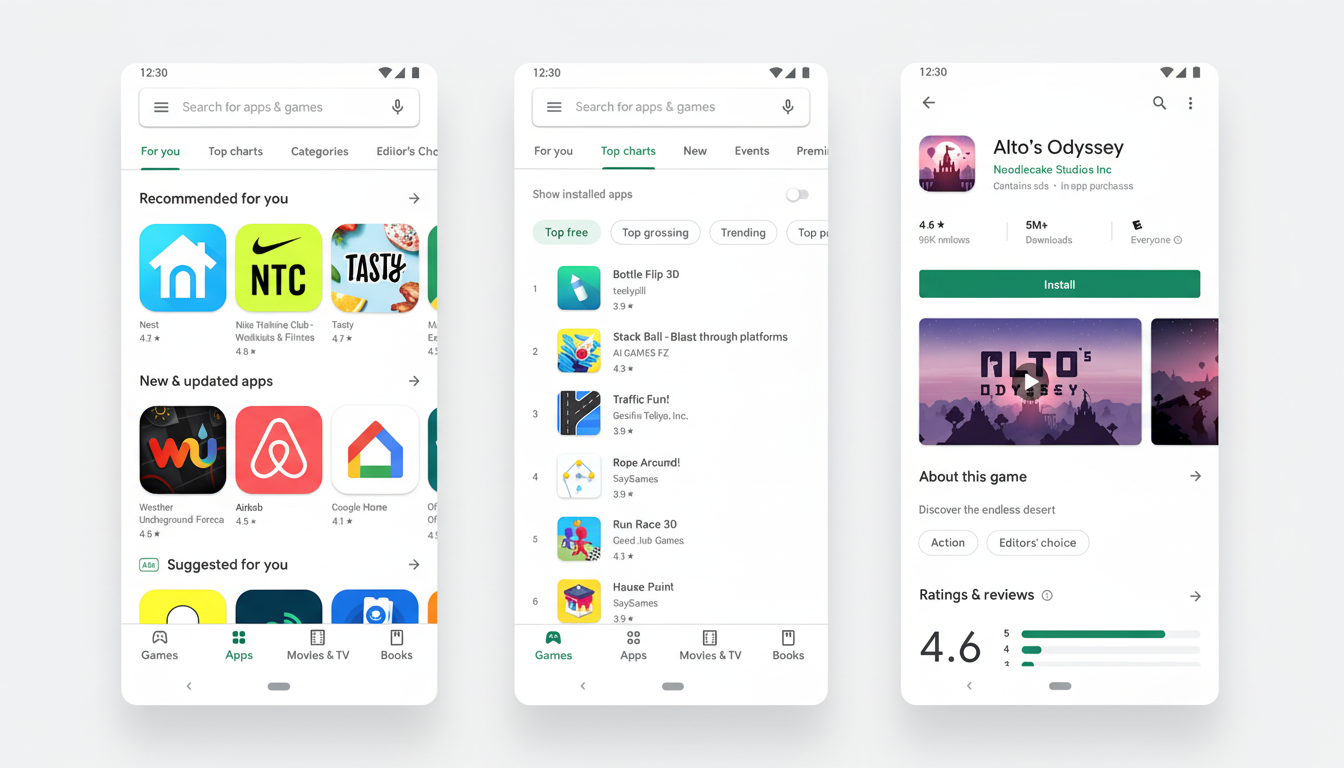Google is expanding a new Play Store feature that distills thousands of user comments into a single, AI-generated snapshot of what people think about an app. The summaries are starting to appear widely in app listings, giving would-be downloaders a faster read on common praise and complaints without wading through endless reviews.
How the AI review summaries show up in app listings
The Ratings and reviews section now leads with a bolded “Users are saying” header followed by a short paragraph. A recent feedback paragraph quickly surfaces which feedback themes are heard most frequently.
- How the AI review summaries show up in app listings
- Rollout and requirements for the Play Store feature
- Why this matters to shoppers and app developers
- Context across the industry: how major platforms compare
- Caveats and trust signals for AI-generated summaries
- What to watch next as Google expands Play Store AI

The summary is balanced between positives and negatives, and it only appears for apps with a substantial volume of reviews to analyze. Below the paragraph, contextual chips identify themes frequently mentioned by users, such as performance, ads, pricing, crashes, or new features. Tapping a chip filters reviews to that theme, allowing quick drilling into the specifics that matter to you, whether that’s battery usage or privacy concerns.
The feature uses generative models to cluster and paraphrase sentiments rather than counting keywords. Expect it to iterate as Google tunes the system to better detect nuance, sarcasm, and the difference between device-specific glitches and widespread issues.
Rollout and requirements for the Play Store feature
The summaries are appearing via a server-side rollout and do not require user tinkering. Many are seeing them on recent Play Store builds, including version 48.5.23-31, though availability varies by device and account.
As always with Play features, expansion is likely staged by region and language, and chances are the summaries won’t display if an app lacks sufficient, recent review volume. Google typically A/B tests interface changes of this type, so keep in mind that you may see the summaries on one phone and not another, even if both are logged in to the same account.
The disclaimer at the bottom, “This text was automatically generated,” means some reviewers were part of the design, so I’m hopeful that there’s still room for user feedback if a summary looks way off.
Why this matters to shoppers and app developers
More than 3 million apps are available on Google Play, and many popular titles have hundreds of thousands of reviews. But many shoppers struggle to parse what’s noise versus signal. A credible one-paragraph synopsis can compress that “I want to be sure that updates have improved app stability recently” vs. “Users say this subscription isn’t worth the money” research into seconds.
Developers have more reason to manage feedback velocity, too. If the model picks up sustained complaints about crashes or dark patterns, that narrative will be one of the first things new users see. On the flip side, consistently positive notes about polish or usage of a new feature can help conversion by reassuring undecided users.

Industry surveys from leading analysts Apptentive and AppFollow have long shown that ratings and reviews are the most critical single variable in install decisions. Structured summaries like these might amplify that effect by making sentiment easier to grasp in one big snapshot.
Context across the industry: how major platforms compare
Google is not alone in this. Apple introduced AI-powered review summaries in this year’s App Store, and Amazon has used generative techniques to produce product review highlights on retail listings. The pattern is clear: platforms are leaning on AI to synthesize crowd feedback, making discovery and due diligence faster while still allowing users to read the raw underlying comments.
The Play Store implementation borrows from that playbook and then adapts it to app-specific concerns, e.g., device compatibility, update cadence, and in-app purchase experiences. The chip filters are especially helpful for mobile, where skimming long lists is painful on smaller screens.
Caveats and trust signals for AI-generated summaries
AI summaries can be sarcastic, overweight early feedback post a large update, or reflect brigading during a review storm. Transparency will be key; clear labeling, links directly to the reviews from the model, and visible timestamps around when the summary last refreshed can help users assess trust.
It also matters how the model handles outliers, spam, and device-specific issues that may not generalize well. For developers, responding to reviews and fixing common issues quickly remains the best defense. If the model prioritizes recent sentiment, timely fixes can shift the summary tone faster. Tooling already in Play Console, which summarizes reviews by topic and versions, could be a natural fit with this feature, closing the loop from insight to action.
What to watch next as Google expands Play Store AI
Expect broader language support, finer-grained topic chips, and, crucially, controls to report those least accurate summaries. It would also make sense to see AI highlights expand to categories like games, where there are millions of new games every day across the spectrum from bad to great and users want quick context before installing any large download.
For now, if you’re seeing “Users are saying” in the “Ratings and reviews” section of an app listing, you’re part of the latest rollout. If not, it’s likely only a matter of time before the Play Store’s AI starts doing the skimming for you.

